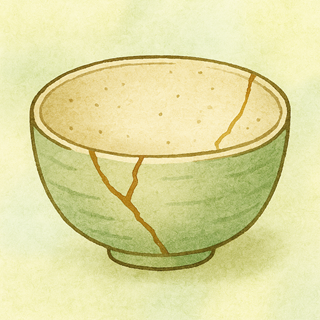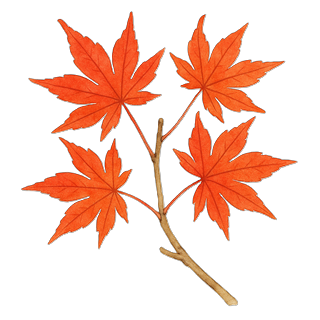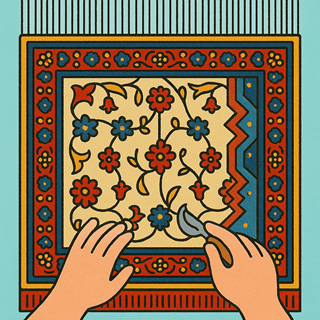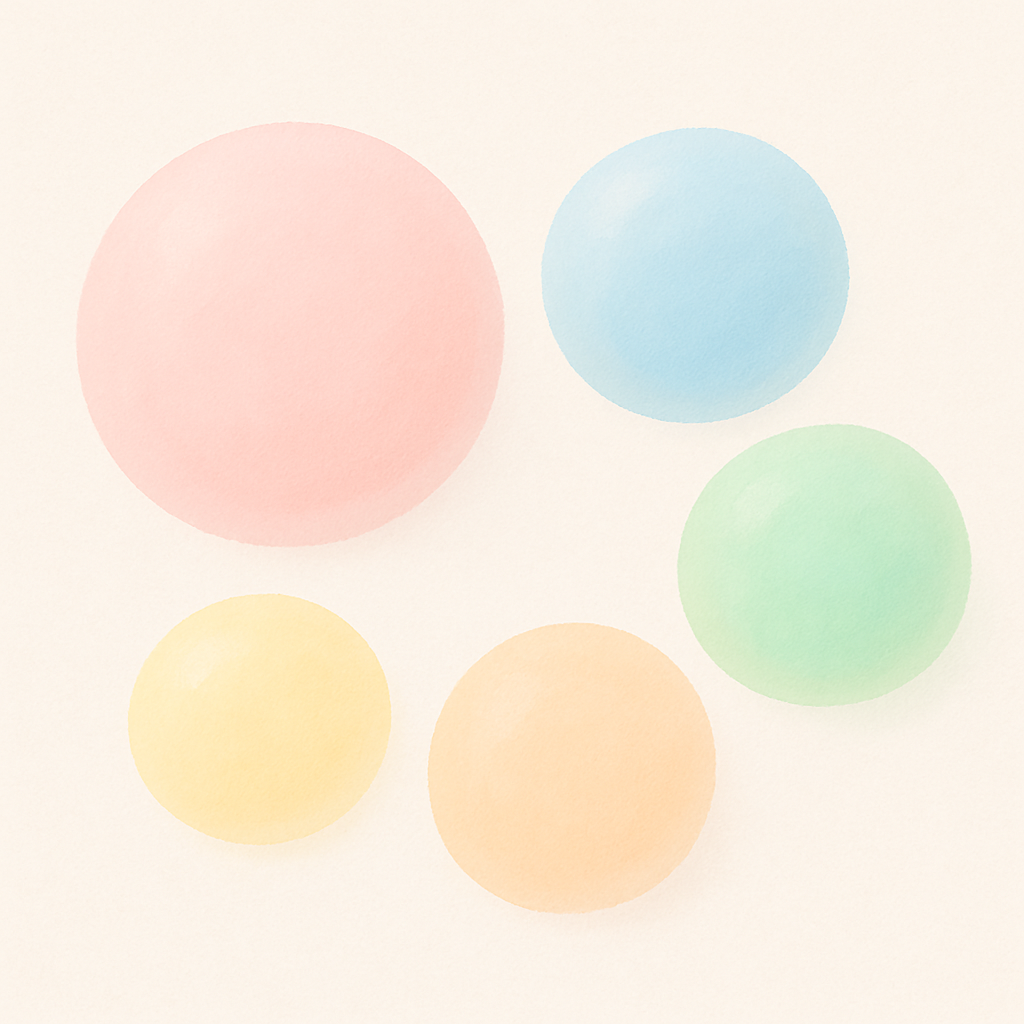In Wabi-sabi, nothing is perfect. Nothing is permanent. Nothing is complete.
But in that brokenness, in that fading, in that quiet — something deeper begins to resonate.
On this page, we explore the beauty that lives within imperfection —
and the quiet world of sound that rises from it —
through the Japanese language of onomatopoeia.
What Does Imperfection Sound Like?
Not all beauty sparkles.
Some beauty crumbles, fades, wears out… and yet it touches the soul more deeply.
| Scene | Meaning | Feeling / Sound |
|---|---|---|
| A cracked tea bowl | A sense of time and touch | kasa — a faint dry sound of the surface |
| An aged wooden pillar | The taste of years | gishi gishi — a gentle creak of time passing |
| A fogged window | The world outside, softly blurred | moya moya — hazy, undefined, quietly alive |
| Raindrops from a leaky roof | A house not yet repaired | pon pon — irregular drops echoing in silence |

Wabi-sabi Is About Letting Go
Beauty in Wabi-sabi is not what remains perfect — it’s what continues to exist, even as it breaks down.
Think of these sounds:
- Shito shito (しとしと) – soft, gentle rain on an old rooftop
- Horori (ほろり) – a quiet tear or petal falling
- Fuuuu (ふうう) – a breath that accepts something you cannot change
- Gata gata (がたがた) – the rattle of a loose window in wind
- Kusha kusha (くしゃくしゃ) – wrinkled, crumpled… and still beautiful
These are sounds that don’t demand attention, but remain —
just like the imperfect things we keep, because they mean something.
Imperfect Sound, Imperfect Life
When things are no longer new or sharp, their “true sound” begins to emerge.
| Feeling / Sound | Meaning |
|---|---|
| Kasa Kasa (かさかさ) | Dry, withered leaves. Fragile, yet full of history. |
| Zara Zara (ざらざら) | Rough surface, imperfect texture — and deeply honest. |
| Choro Choro (ちょろちょろ) | A faucet that doesn’t close completely — a rhythm of imperfection. |
| Potsuri (ぽつり) | A word left unsaid. A sound that feels unfinished — but meaningful. |

In Silence, Imperfection Shines
Wabi-sabi is not loud. It is soft, worn, quiet.
It doesn’t shine in the center — it glows at the edge.
So too do the sounds it brings.
They are:
- Soft, not sharp
- Fading, not fixed
- Incomplete… and beautiful because of it
There is no perfect sound. Only sound that remains.
Let’s listen to the imperfect — and find beauty where it quietly lingers.
The Beauty of Imperfection Across Cultures
Imperfection is not a flaw — it’s a window into time, touch, and meaning.
While Japan’s wabi-sabi is perhaps the most well-known expression of beauty in imperfection,
many cultures around the world embrace similar ideas in their own unique ways.
Here’s how different traditions honor the quiet power of things that are incomplete, weathered, or a little off.
Korea – Sukki (쑥기) and the Space of Incompleteness
In Korean aesthetics, the word sukki (쑥기) expresses a sense of softness, restraint, and quiet incompletion.
Traditional Korean ceramics — especially white porcelain — often celebrate plain surfaces, rounded forms, and subtle asymmetry, much like Japan’s wabi-sabi.
There’s beauty in the unspoken, the unfinished, the gently faded.

China – Gǔzhuō (古拙) and the Elegance of Roughness
Ancient Chinese aesthetics include the concept of gǔzhuō (古拙), which refers to a kind of beauty found in roughness, simplicity, and primitive qualities.
Rather than perfection or polish, gǔzhuō values what is unrefined, natural, and humble.
This idea deeply influenced Japanese Zen art, where beauty is found not in what is flawless, but in what feels honest and alive.

Persia (Iran) – The Deliberate Mistake in Carpets
In traditional Persian carpet weaving, artisans often include intentional imperfections —
small asymmetries or mismatched patterns woven into the design.
Why? Because only God is perfect, and for a human to attempt perfection is considered prideful.
This reflects a deep cultural respect for humility and the beauty of the flawed.

Italy – Sforzatura and the Emotion of Imperfect Sound
In early music traditions, especially Baroque and Renaissance, slight fluctuations in pitch or timing were not seen as mistakes.
They added emotion, humanity, and depth.
This aesthetic — known as sforzatura — values the taste of sound over mechanical precision.
It’s a belief that imperfection in tone reveals the soul of music.

United States – Craft Aesthetics and the Handmade Look
In American contemporary and indie culture, there’s a growing appreciation for the “crafted” feel —
objects that show the maker’s touch, with all their quirks, scratches, and uneven lines.
From pottery to woodwork, to handmade zines and DIY art,
the phrase “perfectly imperfect” has become a beloved way of honoring what is real, human, and expressive.












Comments